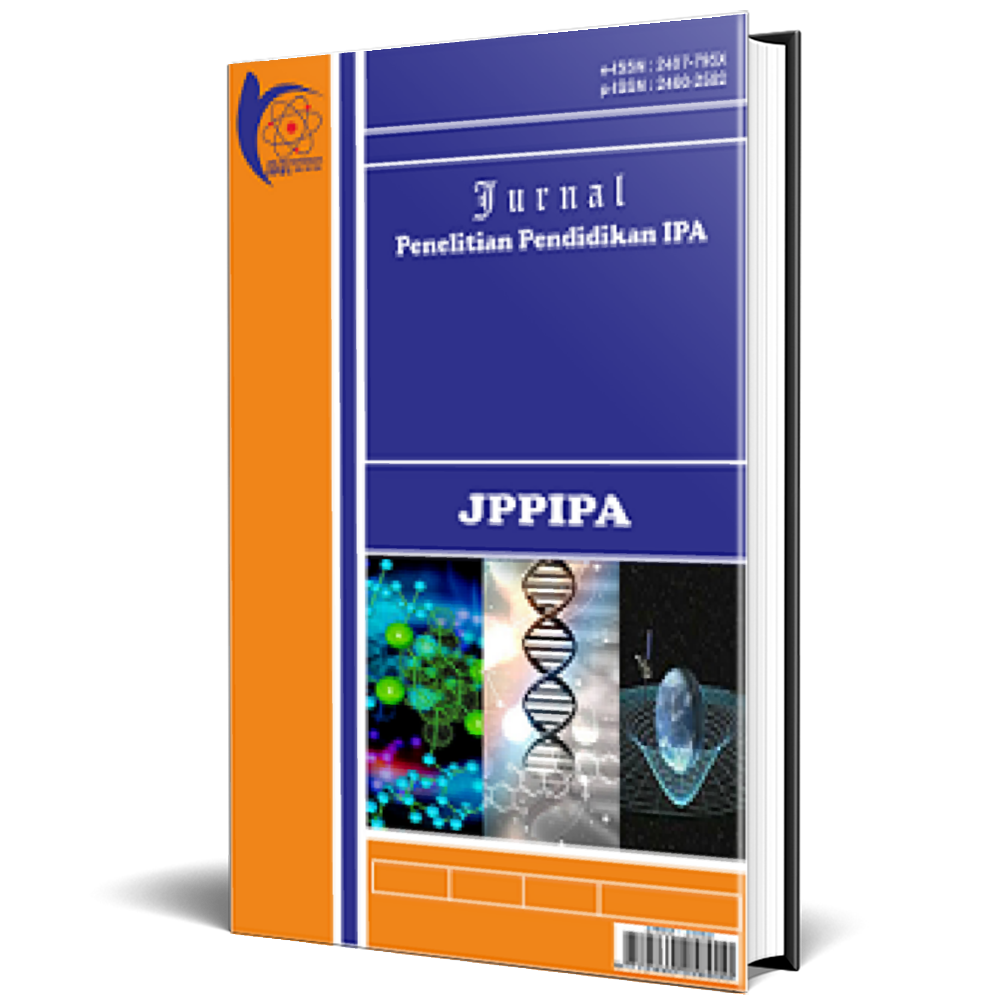Empirical Research on Key Factors of Social Presence: Comparison of Three Universities
DOI:
10.29303/jppipa.v9i11.4668Published:
2023-11-25Downloads
Abstract
This study investigates how cognitive presence and affective connectedness impact social presence. We employed Partial Least Square (PLS-SEM) to analyze the data (N=679). Respondents were gathered from an online survey questionnaire by Indonesian and Malaysia undergraduate students in three universities: Universitas Negeri Medan (n=405), Universitas Negeri Malang (n=215), and Universiti Putra Malaysia (n=59). The result of this study indicates that in terms of the overall sample, cognitive presence and affective connectedness were found to have a positive and significant effect on social presence. If we peel the sample based on three universities, the result is consistent in Universitas Negeri Medan and Universiti Putra Malaysia samples. However, not the case in Universitas Negeri Malang. In this sample, affective connectedness was found to not significantly impact social presence. The findings are discussed in detail related to the key factors of social presence that have unique characteristics from the three campuses. This study suggests that in establishing students’ social presence, the teacher needs to utilize learning that intensifies cognitive presence and affective connectedness in order to foster the social presence.
Keywords:
Affective presence, Cognitive presence, Online learning, Social presenceReferences
Al-dheleai, Y., Tasir, Z., Al-Rahmi, W., Al-Sharafi, M., & Mydin, A. (2020). Modeling of Students Online Social Presence on Social Networking Sites and Academic Performance. International Journal of Emerging Technologies in Learning (IJET), 15(12), 56–71. https://doi.org/10.3991/ijet.v15i12.12599
Bagustari, B. A., Sari, A. M., Juraida, E., & Sensuse, D. I. (2019, October). Anonymity Supporting Tool for Community of Inquiry-Based Platform in Encouraging People to Share Knowledge: A Case Study of Pusilkom Universitas Indonesia. In 2019 4th International Conference on Information Technology (InCIT) (pp. 12-17). IEEE. https://doi.org/10.1109/INCIT.2019.8912055
Bailey, D. (2022). Interactivity during Covid-19: mediation of learner interactions on social presence and expected learning outcome within videoconference EFL courses. Journal of Computers in Education, 9(2), 291–313. https://doi.org/10.1007/s40692-021-00204-w
Boling, E. C., Hough, M., Krinsky, H., Saleem, H., & Stevens, M. (2012). Cutting the distance in distance education: Perspectives on what promotes positive, online learning experiences. The Internet and Higher Education, 15(2), 118–126. https://doi.org/10.1016/j.iheduc.2011.11.006
Chang, C.-M., & Hsu, M.-H. (2016). Understanding the determinants of users’ subjective well-being in social networking sites: an integration of social capital theory and social presence theory. Behaviour & Information Technology, 35(9), 720–729. https://doi.org/10.1080/0144929X.2016.1141321
Cohen, J. (2013). Statistical power analysis for the behavioral sciences. Academic press.
Creswell, J. W., & Creswell, J. D. (2017). Research design: Qualitative, quantitative, and mixed methods approaches. Sage publications.
Dalimunthe, M. B., Dewi, R., Lubis, W., Setyosari, P., Dalimunthe, R. Z., & Lubis, M. A. (2022). The Quality of Students Character on Learning in the Pandemic: A Survey Study. Jurnal Pendidikan Dan Kebudayaan, 7(1), 54–64. https://doi.org/10.24832/jpnk.v7i1.2625
Djatmika, E. T., Setyosari, P., Pratikto, H., Dalimunthe, M. B., Asimiran, S., & Aditia, R. (2022). How to Shape Students’ Social Presence? An Evidence from Indonesia. International Conference on Teacher Education, 2, 378–384. Retrieved from http://icte2022.com/images/vol4.pdf
Faul, F., Erdfelder, E., Lang, A.-G., & Buchner, A. (2007). G*Power 3: A flexible statistical power analysis program for the social, behavioral, and biomedical sciences. Behavior Research Methods, 39(2), 175–191. https://doi.org/10.3758/BF03193146
Fornell, C., & Larcker, D. F. (1981). Structural Equation Models with Unobservable Variables and Measurement Error: Algebra and Statistics. Journal of Marketing Research, 18(3), 382–388. https://doi.org/10.1177/002224378101800313
Hair Jr, J. F., Hult, G. T. M., Ringle, C., & Sarstedt, M. (2017). A primer on partial least squares structural equation modeling (PLS-SEM) (2nd ed.). Sage publications. Retrieved from https://us.sagepub.com/en-us/nam/a-primer-on-partial-least-squares-structural-equation-modeling-pls-sem/book244583
Henseler, J., Ringle, C. M., & Sarstedt, M. (2015). A new criterion for assessing discriminant validity in variance-based structural equation modeling. Journal of the Academy of Marketing Science, 43(1), 115–135. https://doi.org/10.1007/s11747-014-0403-8
Hillman, D. C. A., Willis, D. J., & Gunawardena, C. N. (1994). Learnerâ€interface interaction in distance education: An extension of contemporary models and strategies for practitioners. American Journal of Distance Education, 8(2), 30–42. https://doi.org/10.1080/08923649409526853
Joksimović, S., Gašević, D., Kovanović, V., Riecke, B. E., & Hatala, M. (2015). Social presence in online discussions as a process predictor of academic performance. Journal of Computer Assisted Learning, 31(6), 638–654. https://doi.org/10.1111/jcal.12107
Kreijns, K., Xu, K., & Weidlich, J. (2022). Social Presence: Conceptualization and Measurement. Educational Psychology Review, 34(1), 139–170. https://doi.org/10.1007/s10648-021-09623-8
Ning Shen, K., & Khalifa, M. (2008). Exploring Multidimensional Conceptualization of Social Presence in the Context of Online Communities. International Journal of Human–Computer Interaction, 24(7), 722–748. https://doi.org/10.1080/10447310802335789
Oyarzun, B., Barreto, D., & Conklin, S. (2018). Instructor Social Presence Effects on Learner Social Presence, Achievement, and Satisfaction. TechTrends, 62(6), 625–634. https://doi.org/10.1007/s11528-018-0299-0
Rahmawati, A., & Sujono, F. K. (2021). Digital communication through online learning in Indonesia: Challenges and opportunities. Jurnal ASPIKOM, 6(1), 61-76. http://dx.doi.org/10.24329/aspikom.v6i1.815
Shen, K. N., Yu, A. Y., & Khalifa, M. (2010). Knowledge contribution in virtual communities: accounting for multiple dimensions of social presence through social identity. Behaviour & Information Technology, 29(4), 337–348. https://doi.org/10.1080/01449290903156622
Short, J., Williams, E., & Christie, B. (1976). The social psychology of telecommunications. Toronto, London, New York: Wiley.
Tasir, Z., & Al-Dheleai, Y. (2019). Web 2.0 for fostering students’ social presence in online learning-based interaction. JOTSE: Journal of Technology and Science Education, 9(1), 13–19. https://doi.org/10.3926/jotse.552
Weidlich, J., & Bastiaens, T. J. (2018). Technology Matters–The Impact of Transactional Distance on Satisfaction in Online Distance Learning. International Review of Research in Open and Distributed Learning, 19(3). https://doi.org/10.19173/irrodl.v19i3.3417
Weidlich, J., Göksün, D. O., & Kreijns, K. (2022). Extending social presence theory: social presence divergence and interaction integration in online distance learning. Journal of Computing in Higher Education. https://doi.org/10.1007/s12528-022-09325-2
Wut, T., & Xu, J. (2021). Person-to-person interactions in online classroom settings under the impact of COVID-19: a social presence theory perspective. Asia Pacific Education Review, 22(3), 371–383. https://doi.org/10.1007/s12564-021-09673-1
Yaman, N., & Muhlis, M. (2020). Students’ Social Presence and Perceived Learning toward CCU Course in Online Classroom (An Evaluating of Learning Process during Pandemic Coronavirus). English and Literature Journal, 7(1), 61–73. https://doi.org/10.24252/elite.v7i1a6
License
Copyright (c) 2023 Ery Tri Djatmika, Muhammad Bukhori Dalimunthe, Punaji Setyosari, Heri Pratikto, Rosmala Dewi, Reza Aditia

This work is licensed under a Creative Commons Attribution 4.0 International License.
Authors who publish with Jurnal Penelitian Pendidikan IPA, agree to the following terms:
- Authors retain copyright and grant the journal right of first publication with the work simultaneously licensed under a Creative Commons Attribution 4.0 International License (CC-BY License). This license allows authors to use all articles, data sets, graphics, and appendices in data mining applications, search engines, web sites, blogs, and other platforms by providing an appropriate reference. The journal allows the author(s) to hold the copyright without restrictions and will retain publishing rights without restrictions.
- Authors are able to enter into separate, additional contractual arrangements for the non-exclusive distribution of the journal's published version of the work (e.g., post it to an institutional repository or publish it in a book), with an acknowledgment of its initial publication in Jurnal Penelitian Pendidikan IPA.
- Authors are permitted and encouraged to post their work online (e.g., in institutional repositories or on their website) prior to and during the submission process, as it can lead to productive exchanges, as well as earlier and greater citation of published work (See The Effect of Open Access).









